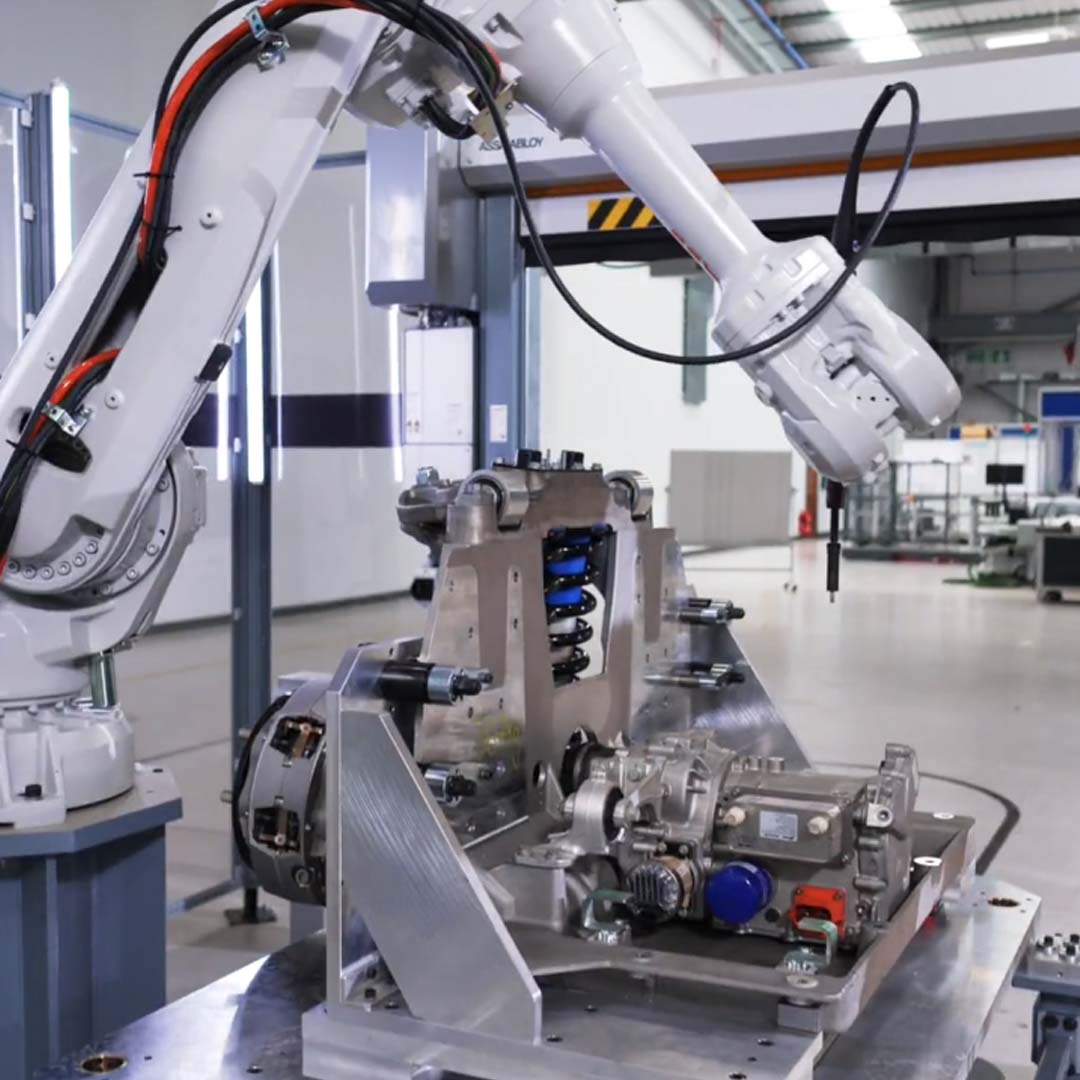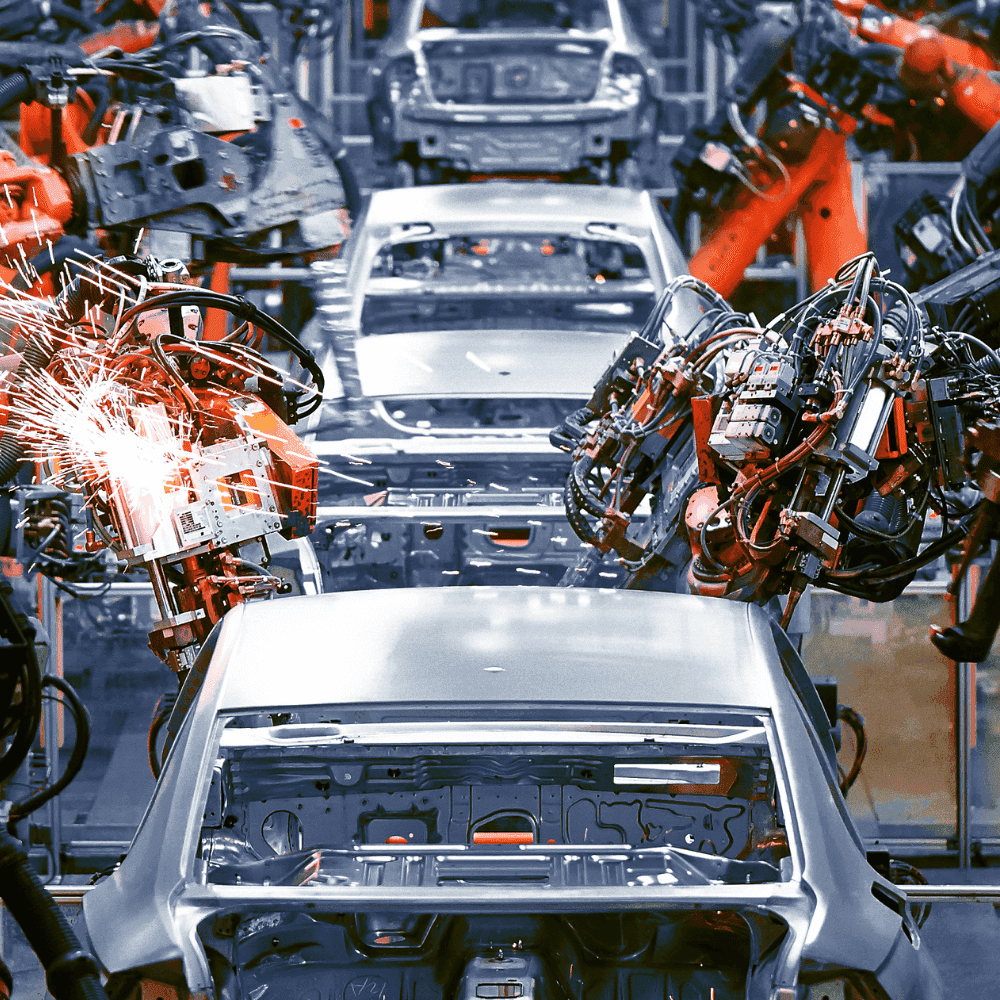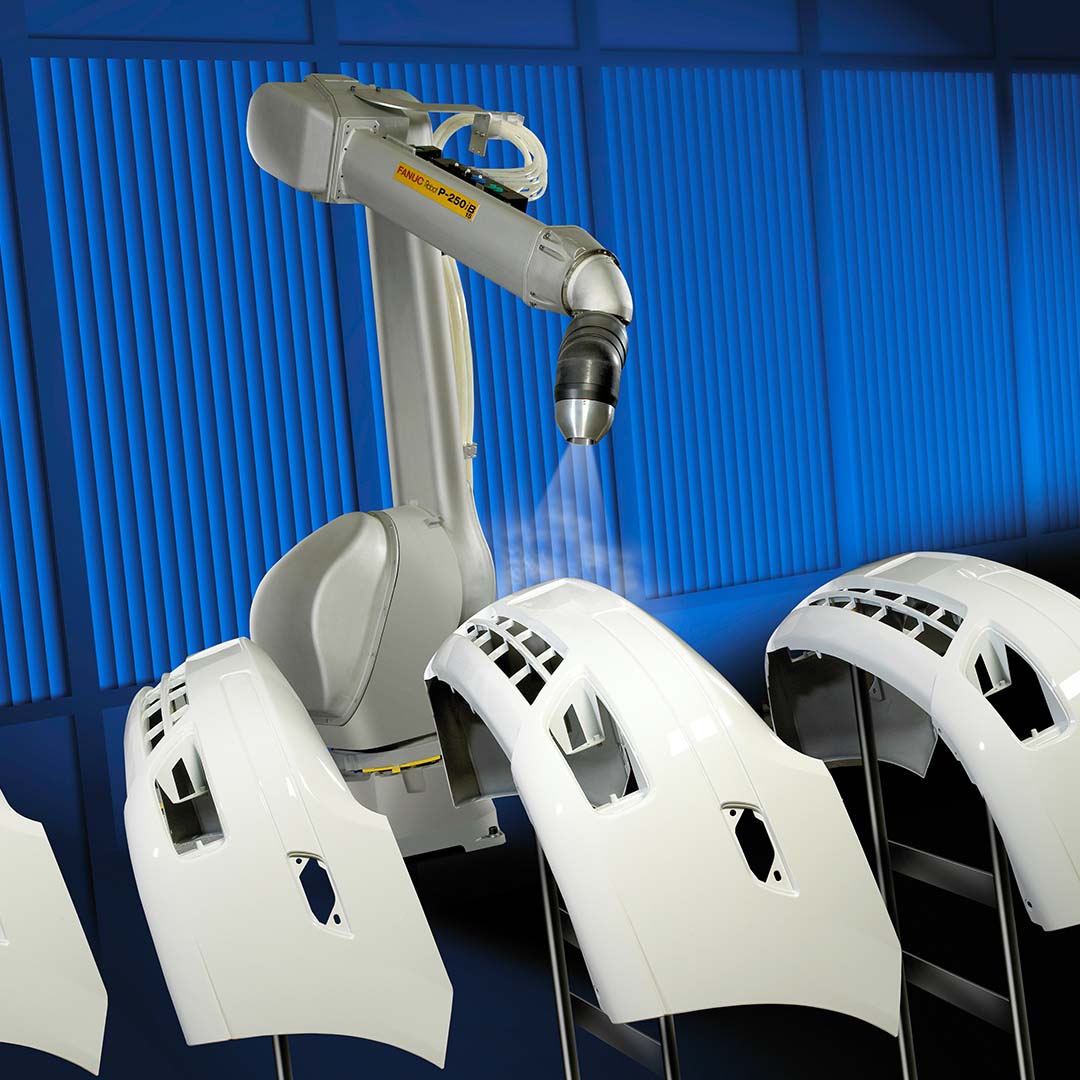Robotic systems, which we specialise in offering, automate a variety of jobs in manufacturing operations. These solutions can be tailored to match the unique requirements of a facility and can increase productivity, accuracy, and safety in manufacturing operations.
Some popular robotic solutions we can provide include:
Cobots, often referred to as collaborative robots, are used for jobs like assembly, packaging, and material handling and are made to collaborate with human workers. The employment of articulated robots for activities like welding, painting, and material handling is made possible by their network of rotary joints, which provide a broad range of motion. SCARA robots are frequently employed for tasks like assembly and material handling and include a parallel connection structure. Delta robots are fast, parallel-linked robots that are frequently employed for assembly and packing work. Cartesian robots, often referred to as gantry robots, are frequently employed for operations including material handling, welding, and cutting. They utilise a rectangular coordinate system.
Moreover, robotic systems can be combined with other pieces of industrial machinery, such conveyors, to build a completely automated production line. These systems can also be programmed to adjust to changes in production demands, giving the manufacturing process more flexibility.

In order to automate repetitive or hazardous welding jobs, such as welding big parts or welding in difficult-to-reach places, we offer robotic arms to perform the necessary welding processes. Compared to conventional hand welding techniques, our welding solutions can provide a variety of advantages.
Some of the most notable benefits by using our systems include:
We are able to provide a variety of welding techniques, including GMAW, GTAW, FCAW, SAW, and even laser welding. The customer’s specific application, the surrounding conditions, the level of accuracy and speed required, the size and thickness of the pieces, the type of metal, and the necessary welding process all play a role in the process selection.

We can also offer robotic systems for cutting, removing, and manipulating metal in industrial environments using robotic arms fitted with specialist instruments like cutting torches, plasma cutters, or grinding wheels. Common applications for these systems include automating repetitive or hazardous activities like cutting and removing big, heavy pieces of metal or handling metal parts in unsafe or confined locations.
Robotic metal cutting solutions are beneficial for a number of reasons:
Oxy-fuel cutting, plasma cutting, laser cutting, waterjet cutting, and abrasive cutting are a few of the cutting methods we can offer. The client’s application-specific requirements, environmental factors, the required level of accuracy and speed, the size and thickness of the parts, the type of metal, and the required cutting process all influence the choice of an effective solution.
For many sorts of metal handling, such as loading and unloading parts from machines, moving parts between machines, palletizing and de-palletizing parts, stacking and unstacking of parts, packaging, and wrapping, robotic systems for metal handling also use robotic arms and grippers.

Assembly line robots can increase productivity, precision, and safety in industrial processes. Robots can complete jobs consistently and precisely, eliminating the need for manual labour and reducing human error. Also, they can work in dangerous conditions and with big loads, boosting worker safety. Robots can also be programmed to adjust to changes in production demands, giving the manufacturing process more flexibility. These technologies can be tailored to a manufacturing facility’s particular requirements and integrated with current machinery to improve production procedures.

We can improve the efficiency, consistency, and quality of the painting process in manufacturing operations through the use of robotic solutions. Robots can be programmed to apply paint with precise control, ensuring consistent coverage and reducing the need for manual labor. They can also handle large or heavy parts, improving worker safety and reducing the risk of repetitive strain injuries.
Some of our popular robotic solutions for painting include:
Robot arms with paint sprayers are commonly used in automotive, aerospace and other industries where precision painting is required. Automated painting systems are specially designed for large-scale painting operations and can handle multiple parts at a time. Robotic paint cells are enclosed systems that can be used to paint large items such as vehicles, machinery, and other equipment. These solutions can also be integrated with other manufacturing equipment such as conveyors to create a fully automated painting.